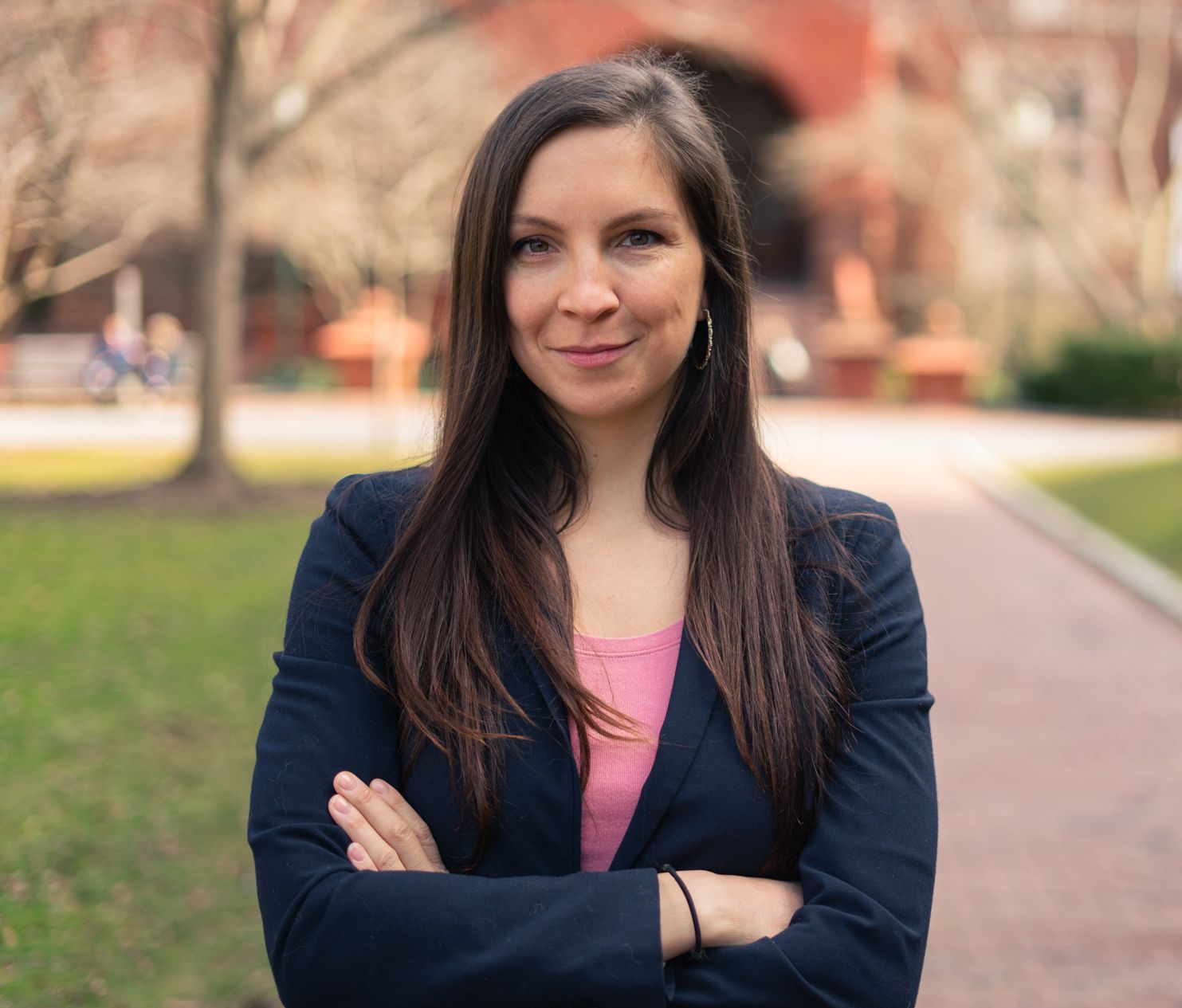Want to learn how to get into Harvard Law School?
You’re in the right place. Today, you’ll get the exact steps to apply to Harvard Law – and stand out from other applicants.
Want to learn more? Read on.
How hard is it to get into Harvard Law?
Harvard Law is the fifth highest-ranking law school in the country. And that’s why it’s also one of the hardest to get into.
In fact, the acceptance rate is 10.1%. For the class of 2025, 8,225 people applied and 822 were admitted.
However, while the application process is competitive, many applicants make the mistake of thinking that their LSAT and GPA scores are all that matters.
But this couldn’t be further from the truth. Getting admitted to Harvard Law – especially if your scores aren’t that good – is a very strategic process. We’ll look at each step below.
But first, let’s start with law programs offered by Harvard Law.
What programs does Harvard Law School offer?
Harvard Law School offers different law programs.
These are:
- Juris Doctor (JD)
- Master of Laws (LLM)
- Doctor of Juridical Science (SJD)
Harvard also offers different joint degree programs (like law and business or law and government).
We’ll focus on JD admissions here.
So what qualifications do you need to get into Harvard Law? That’s what we’ll look at next.
What qualifications do you need to get into Harvard Law?
Harvard Law is notoriously difficult to get into. But who gets accepted? Here’s what you need to know.
Who gets into Harvard Law School?
Of those who were admitted to the class of 2025:
- 78% were at least one year out of college (so for most applicants, post-college experience is key)
- 65% were two or more years out of college
- 21% were four or more years out of college
- 54% are women
- 54% are students of color
- 17% are first-generation and/or low-income students
- 17% are LGBTQ+
- 9% are international students
- 13% are STEM majors
Admitted students come from all types of colleges, such as:
- Berklee College of Music
- Beis Medrash Heichal Dovid Rabbinical College
- University of Hawaii, Manoa
- SUNY Buffalo
You can see the full list here.
You can also see the stats of those admitted here:

We’ll talk more about them below, but as the Harvard admissions pages state:
“As a general guideline, most admitted applicants demonstrate potential for success in law school through an exceptional undergraduate academic record, standardized test scores in the top percentiles, and substantial accomplishments in work or extracurricular activities; however, no one of these aspects of an applicant’s file is dispositive in the admissions decision.
Our assessment includes many factors such as work experience and demonstrated leadership, and also intangible qualities such as energy, ambition, sound judgment, ability to overcome adversity, high ideals, and concern for the welfare of others. Our admissions committee seeks not only to identify and recognize characteristics that are important to academic success in law school, but also qualities that will contribute diversity of perspective and experience, general excellence, and vitality to the student body.”
Which means that you can get in without perfect stats.
It’s extremely important for law schools to have candidates who will thrive after their studies and who bring something to the legal field. Whether that’s unique expertise, representation, and/or something else.
In fact, students admitted to the class of 2025 come from 18 countries, 49 states, and together, they speak 58 languages.
They play 30 instruments and many of them have interesting backgrounds. Like one student who is a professional cheese connoisseur, 10 students who are scuba divers, or 18 students who are teachers.

This is to show that any “requirements” aren’t set in stone. What you can bring to Harvard and why you want to become a lawyer are important, too.
So, now, let’s take a look at how you’ll get into Harvard Law. First up: Your GPA.
What GPA do you need for Harvard Law School?
The latest GPA scores for Harvard Law were:
- 25th percentile: 3.82
- 50th percentile: 3.92
- 75th percentile: 3.99
So here, a low GPA is 3.82 or under. A high GPA is 3.99 and the median is 3.92.
There’s no lowest GPA but you probably won’t get into Harvard with a 2.5 GPA. Your GPA still needs to be somewhat competitive with the median GPA.
That said, you can get into Harvard Law School even if your GPA is 3.82 or lower.
Let me show you what I mean:
My client (I’m using their initials to protect their anonymity) E.D. applied to the University of Michigan Law School during one of the most competitive admissions cycles in recent history. Their GPA was 3.2 – but the University of Michigan’s median GPA was 3.84. This applicant got accepted despite their low GPA.
Or take my client A.S., who got into Harvard with a 3.75 GPA and a LSAT score of 172. This just goes to show that you can get in even if you don’t have the perfect scores.
And these students aren’t the only ones. Several of my clients have gotten accepted into one of their top 10 law schools despite lower GPA scores than the school’s median.
Why?
They didn’t do something extraordinary like cure cancer. Many of them weren’t underrepresented minorities (the most aggravating assumption).
Instead, they demonstrated to admissions officers how their GPA didn’t represent their capabilities. Despite their lower GPA, they had what it took to become successful law students at their chosen law school.
The same applies to your Harvard Law application.
Say your GPA is 3.4 or 3.5. You can still get into Harvard Law School. Ultimately, it all depends on your application.
What LSAT score do you need for Harvard Law School?
Similarly, your application doesn’t hinge on your LSAT score.
The latest LSAT scores for Harvard Law were:
- 25th percentile: 170
- 50th percentile: 174
- 75th percentile: 176
I’ve had clients who have gotten into law schools with LSAT scores that were seven, nine, or even thirteen points lower than that law school’s median LSAT score.
For example, my client “A.K.” got into George Washington with an LSAT that was 154 – 13 points below the median LSAT.
“E.O.” got into Berkeley Law with an LSAT score that was 6 points below the median LSAT for that school.
So, again, you can get into Harvard Law with a lower LSAT score.
How do you get into Harvard Law with a lower GPA or LSAT scores?
While you can get in with lower GPA/LSAT scores, how do you do that?
Here are a few ways…But you need to identify what works best for your specific situation. We’ll talk about the specifics later on in this article (how to get letters of recommendation, write personal statements, and so on).
Work between undergrad and law school
The more time there is between your undergrad and your law school application, the less your GPA will matter.
With your work experience, you can show the admissions officers that you’ve matured and have what it takes. However, to really stand out, your work experience should be substantive and demanding.
Have a strong LSAT or GPA
If your LSAT score is high, it can help if your GPA is low and vice versa. But you don’t have to have a ridiculously high LSAT or GPA for this to work – even a median or lower than median LSAT/GPA will help you.
Robust letters of recommendation
Letters of recommendation are often overlooked in law school applications. Preferably they should come from a professor to show that you have what it takes academically. Even if you didn’t get an A in a course, you could still get a great letter of recommendation – for example, if you showed grit and passion despite outside circumstances or took a particularly difficult class, a B can be an achievement.
Addendum
There are instances when you can use an addendum to explain your low scores. However, you need a real reason for writing an addendum – for example, if you had to work to support yourself during college or had a death in the family.
Personal statement
Your personal statement can be the thing that gets you accepted to law school despite your low scores. Showing your way of thinking is key.
Retake the LSAT
If you have a low LSAT score, a “no brainer” is to retake your LSAT. That said, I don’t recommend that you take it more than three times.
Take the GRE
Consider taking the GRE if LSAT isn’t your thing. But first, take a few practice tests to understand if this test is worth taking for you.
Read more in my guides on what GPA you need for law school and whether you can get into law school with a low LSAT score.
What are the Harvard Law School requirements for international students?
Harvard Law School admits applicants from various countries and the chances of admission of internationally educated students are the same as for students educated in the US.
For instance, the class of 2025 has students from 18 different countries.
The requirements are the same as for US students. You don’t need a TOEFL to prove your English proficiency. But you will need to show that your undergraduate degree is equivalent to a US bachelor’s degree.
You can read more about the requirements for international applicants here.
How do you apply to Harvard Law?
Next, let’s look at what you need for your Harvard Law School application.
You need:
- LSAT/GRE scores
- A law school resume
- Two or three letters of recommendation
- Character and fitness questions (you’ll use these for the bar application so being truthful is of the utmost importance)
- Proof of an undergraduate degree
- Law school personal statement
- Law school diversity statement (optional)
- Additional information, such as your addendum (optional)
Harvard Law admissions open in September and are rolling so send your application as soon as possible. While the application technically doesn’t close until February, your chances of admissions go down significantly if you submit after the New Year.
You can read more about the application requirements here.
If you’re accepted as a competitive applicant, you get an interview. Those who are selected for an interview are notified by email.
Now, let’s look at the four things that can have a big impact on your application: Your personal statement, diversity statement, letters of recommendation, and resume.
Write a personal statement
How do you write a personal statement that stands out?
First of all, you need to use the right format. Harvard Law School accepts personal statements that are no longer than two pages with a minimum of 11-point font, one-inch margins, and double spacing.
In terms of topic, a common mistake is to cram in as much as possible. But a personal statement should tell a coherent story that supports your overall application.
Here’s how Harvard defines a good personal statement:
“The personal statement is intended as an opportunity to give the Admissions Committee a better sense of who you are as a person and as a potential student and graduate of Harvard Law School. In many instances, applicants have used the personal statement to provide more context on how their experiences and strengths could make them valuable contributors to the Harvard and legal communities, to illuminate their intellectual background and interests, or to clarify or elaborate on other information in their application. Because applicants and their experiences differ, you are the best person to determine the content of your statement.”
And here below is my client “PS’s” personal statement from their Harvard Law application:
“I grew up in a home plagued by alcoholism. My siblings and I lived perpetually at one end of the spectrum or another—some days showered with almost every gift we could think of, and on others coming home to find the electricity or water shut off due to unpaid bills.
While my home life was akin to a swinging pendulum, unclear of where things would land on any given day, I had a steadiness within myself, rooted in my own proprietary blend of boldness and confidence in my ability to seek out knowledge and use it to create opportunity.
In middle school, after learning about the Magna Carta, I researched legal templates to draft a contract limiting the powers of a club’s micromanaging teacher-advisor—and convinced her to sign. In high school, I sent over 200 cold emails until I was offered a research internship to pursue my interest in biomedical research. And after designing a free curriculum to teach creative writing in schools whose art programs had been cut, I chased down state legislators to disseminate policy proposals I had written to institute low-budget creative writing programs—and got my proposal in front of the School Board.
At the beginning of my undergraduate career at Stanford, my initial plan to build on my biomedical research interests to be a physician quickly felt lacking. I knew I was missing something when I envisioned myself as a doctor or researcher, but I felt unwilling to let go of my connection with medicine.
As it happened, medicine wouldn’t let go of me, either.
In my sophomore year, my now-sober dad was diagnosed with end-stage cirrhosis of the liver.
The fallout was immediate, both emotionally and strikingly, monetarily. The aftermath of his diagnosis took me outside of my own sphere and opened my eyes to the failings of the complex dynamics that govern our healthcare system. My family was fully insured, yet we faced considerable difficulties paying for his unexpected hospitalizations. My search to better understand my family’s situation led me, still in school, to enroll in coursework focusing on the inner workings of the U.S. healthcare system. Quickly, I became attuned to the plight of patients just like my dad without the financial resources to support their care, and their quest for even a fighting chance against diseases just like his.
The patient journey and the systems that govern it soon became an academic passion of mine, and I amended my undergraduate education to make this my new focus. As a global health major, I put my own frustrations with what I saw as an inhumane system of profit over people to work and explored designing solutions to increase patient access to care: I created a low-budget proposal for malaria border checkpoints to improve surveillance between Indian states, lead-authored a study on representation of low-income countries in global health academia, and advised cash-strapped Medicaid hospitals looking for ways to finance more effective service for their millions of homeless and low-income patients.
Through my experiences with the titanic issue of inequity and inaccessibility in for-profit health systems across the globe, I discovered something even larger than my personal desire to better my and my family’s lives: purpose. I felt an immense sense of fulfillment by dedicating my time and energy to creating solutions for others rather than myself and knew I wanted to serve through legal reform.
While I solidified where I wanted to make an impact long term, my family continued to grapple with my dad’s deteriorating condition, as it became clear he would not survive without a transplant. Over months of searching for possible donors in vain, I saw my dad nearly lose his life on “the list” waiting for a new liver. It is not lost on me that his successful eleventh-hour transplant was a stroke of pure luck.
Many others are not so lucky, though no less deserving of care than my own family.
This has only deepened my resolve to find better answers for patients less fortunate than my dad.
Now, I aim to go up against the broken systems that create these realities. From my time consulting for Medicaid hospital affiliates to my current role advising for-profit healthcare litigants, I’ve learned that this will require an effective management of the transition from fee-for-service healthcare models towards value-based payment solutions. Success in this pursuit requires a balance—creating stable non-monetary incentives for high-quality treatment and prevention of illness without sacrificing immediate access to care for all patients regardless of background. I seek a legal education that provides me with an intellectual and practical experience to hone my approach to reform and further define this balance.
I intend to begin my career as a healthcare attorney, working directly with institutions to develop a deep understanding of the delicate nuances of the healthcare system. My years in practice will equip me to bring this knowledge to an academic or legislative role later in my career, where I intend to author policy that creates a system motivated by the value of human life and health, not just financial gain.”
The statement shows this applicant’s passion and sense of purpose for getting into law school. It gives a clear narrative for why this applicant would be the ideal candidate for Harvard Law.
I share more tips in my guide on how to write a personal statement.
Want to find YOUR perfect personal statement topic?
Get my free PDF to brainstorm your topics:
Write a diversity statement
Next, we have your diversity statement.
Optional statements, like this one, should be up to one page, double spaced, using a font size that is comfortable to read (not less than 11 point).
So should you write a diversity statement?
Law schools want a diverse student body, so if you have a diverse background, you should write one.
Now, a “diverse background” is broader than you might think.
A few examples are:
- Disability
- Religion
- Difficult upbringing
- Military/law enforcement service
- First generation status
- Ethnic, racial, or national identity
- Sexual orientation or gender identity
- Socioeconomic status
- Adversity
- Change of careers
Here’s an example of a diversity statement my client “AI” used for her Harvard Law application:
“I grew up in a vibrant cultural world, thanks largely to my mom raising me and my siblings with a close connection to the traditions she grew up with in Chennai, India. My first language was Tamil, gleaned from my parents, grandparents, and ‘80s children’s songs played on car rides. I went to Balavihar, Hindu Sunday school, and donned dazzling pattu pavadais for every religious festival. I reveled in the values and experiences my upbringing gave me and celebrated the culture at its heart.
While I felt like I had built an understanding of what it meant to me to be Indian, to be Tamil, it was not until I left home that I learned what it might mean to others. What I’d only ever read about came to life when I took my first solo trip to the UK as a nineteen-year-old to intern at The Lancet, a premier biomedical journal. At Heathrow Airport, I was stopped and asked a bevy of “additional screening” questions, eventually detained for eight harrowing hours. In the cold, barren cell I was confined to, I noticed a startling level of similarity in the Black and brown faces of my fellow detainees.
Since then, I’ve become deeply attuned to the outward attributes that make me, me, and my intersection of identities. I am not just Indian—I’m an Indian woman. To add to that—a visibly dark Indian woman. The list goes on. And out of all the spaces I’ve inhabited since, the ones that have been the most threatened by my identity are those in which I am a leader. As the only dark-skinned BIPOC woman on my leadership board as the president of the Stanford Inter-Sorority Council, I deliberately inhabited an uncomfortable space in the hopes of creating reform in the traditionally racist, classist Greek system. I was largely ignored for sharing my experiences with discrimination, criticized for demanding change.
When I instituted the Council’s first-ever Women of Color Collective to curate resources for BIPOC women, it too went unnoticed. I found myself relentless to get a seat at the table.
Leadership is integral to who I am and my ambition is as much a part of me as my background, so I refuse to become discouraged from taking on these positions. Crucially, my leadership is informed by empathy, a deep and personal understanding of being othered and how important it is to hold on to our beliefs in the face of the pressure to conform. An understanding of these dynamics is crucial to working effectively and meaningfully with a diverse group of people in an increasingly diverse world, a trait I hope to highlight at the center of my pursuit and practice of the law.”
Read more about diversity statements here.
Get letters of recommendation
You also need letters of recommendation.
Harvard Law requires two but accepts three letters. (I recommend that you send all three!)
At least one letter should come from a professor, advisor, or other educational contact who can address your academic abilities. But if you’ve been out of school for a long time (more than five years), you can submit letters from employers or others who have worked closely with you.
Many people struggle with finding people to ask for recommendations, especially if they weren’t the best in class. But you probably have people to ask.
If you had a class you were particularly interested in, your professors probably took note. Even if you didn’t get an A, the class might have been difficult enough to warrant a recommendation.
If you want to learn more about who, when, and how to ask for your letters of recommendation, take a look at my guide here.
Write a law school resume
Finally, you need a resume.
Now, your law school resume isn’t a normal resume you’d use when applying for a job.
Instead, your resume – which offers an excellent opportunity to stand out – should support your overall application.
The main headers tend to be:
- Education
- Professional Experience and/or Employment
- Activities
- Community Engagement
- Publications
- Accomplishments
- Skills/Interests
You then highlight the qualifications, traits, and experiences you need for law school, such as:
- Analytical and writing abilities
- Leadership
- Community engagement
- Work ethic
- Self-financing your education
- Athletic talents
- Cultural or volunteer activities
- Language proficiencies
- Juggling multiple responsibilities
- Creativity & innovation
Want to learn the step-by-step of writing your own resume?
Next steps
There you have it! Now you know how to get into Harvard Law School.
As you now know, not everything comes down to your academic achievements.
Regardless of your GPA or LSAT score, you need to create an application that speaks to why you are the right candidate to get accepted into Harvard Law.
How?
Apply to my law school admissions consulting to get into Harvard.
Learn more:






